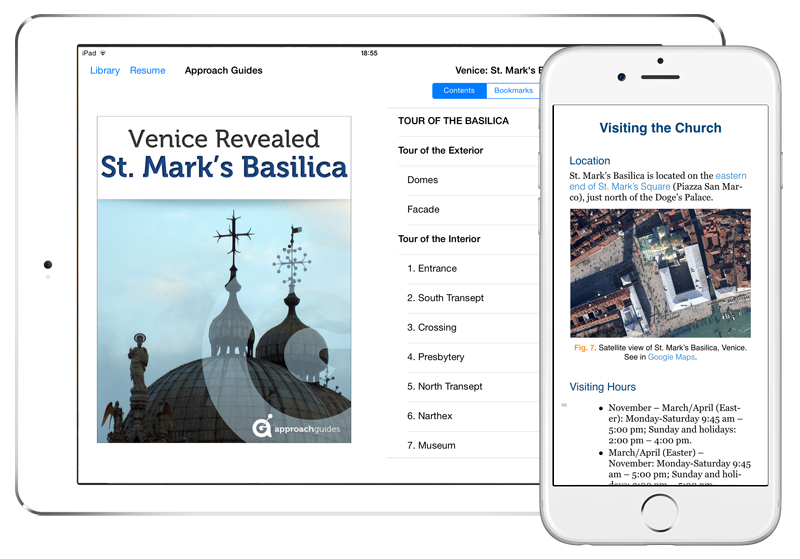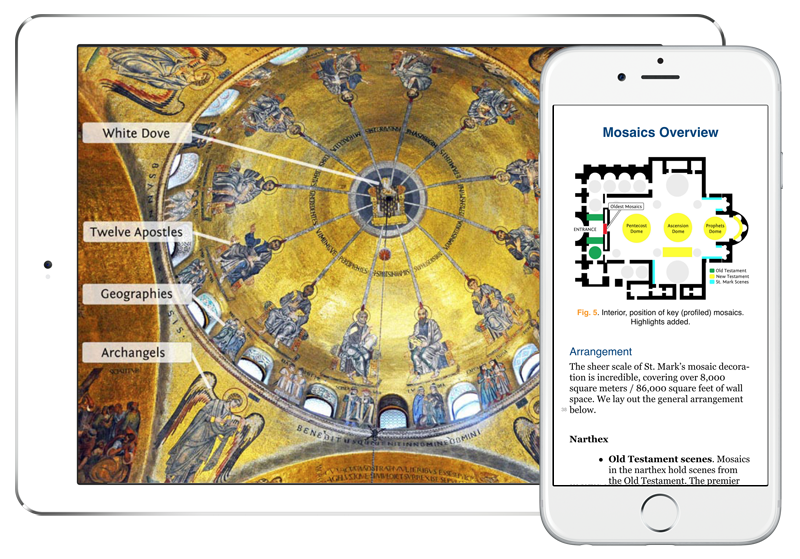Before Venice could establish itself as a maritime trading power, it had to find a way to preserve its independence in a world dominated by two massive empires: the Holy Roman Empire in the West and the Byzantine Empire in East. The capture of St. Mark’s relics — and the subsequent construction of a grand basilica to house them — was a brilliant solution given the tight linkage between religion and politics in the Middle Ages. With one bold move, Venice had acquired the prestige it required to prosper without interference.
As the source of the Venetian Republic’s legitimacy, St. Mark’s Basilica increasingly became the symbol of its accrued economic, political, and military strength. Perhaps no other single monument better embodies the city in which it stands. It is yours to discover.
What’s in this guidebook
- History. We explain why the securing of St. Mark’s relics was of fundamental importance to Venice’s political independence and how it influenced the design of the basilica.
- Architectural evolution. The current church is the third to sit on the site. We cover how the church’s architectural arrangement — based on the 6th century Byzantine Church of the Holy Apostles in Constantinople — evolved over the ages and review its distinctive features.
- Mosaics. The church’s Byzantine-inspired mosaics are unrivaled. We discuss their history, their organization in the church, the message they were intended to communicate to the faithful, and the defining characteristics of the prevailing styles.
- Tour of the highlights. Following our tradition of being the most valuable resource for culture-focused travelers, we tour the church, walking step-by-step through architectural and artistic highlights. All of our descriptions reference high quality images.
- Advice for getting the best cultural experience. To help you plan your visit, this guidebook offers logistical advice and provides links to online resources. Plus, we provide our personal tips for getting the most from your experience while on location.
- Information the way you like it. As with all of our guides, this book is optimized for intuitive, quick navigation; information is organized into bullet points to make absorption easy; and images are mocked up with text that explains important features.





